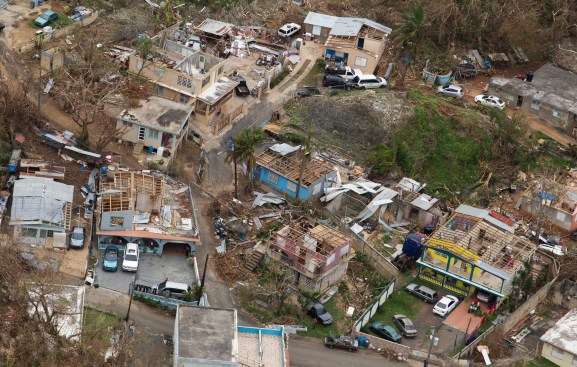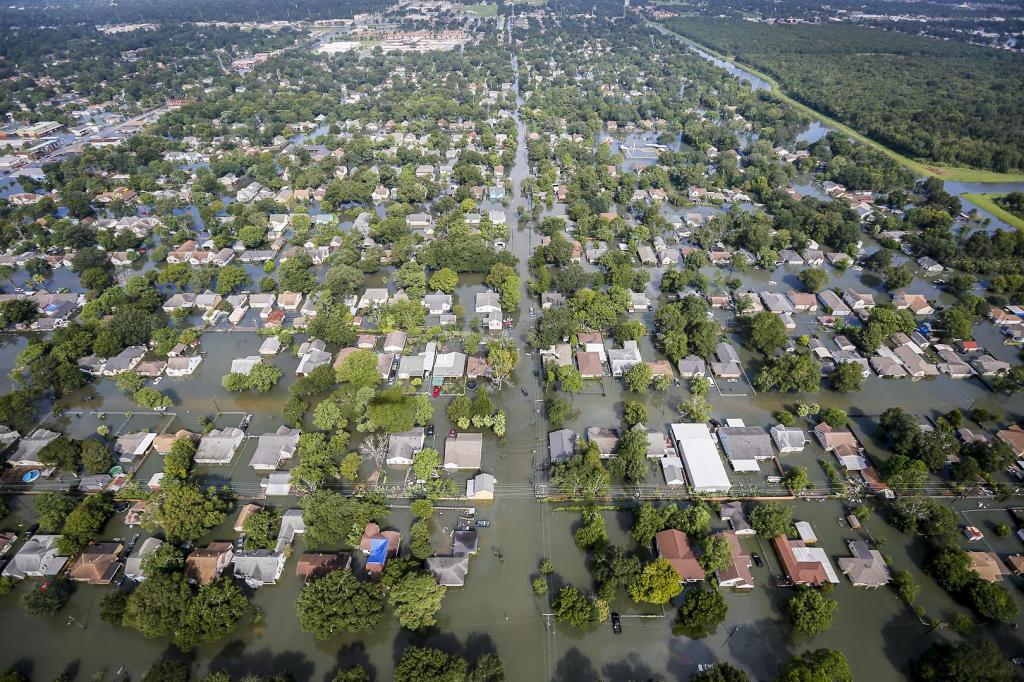The two year, multi-billion-dollar budget agreement crafted by the U.S. Senate last week includes more than $80 billion in funding for relief, recovery, and rebuilding in states affected by last year’s record-breaking hurricanes. Texas and Puerto Rico will see a hefty chunk of that money, according to press reports.
Texas governor Greg Abbott moved quickly to start the money flowing. “The state expects to receive just over $1 billion in hazard mitigation money from the Federal Emergency Management Agency by the one-year anniversary of Harvey’s landfall in late August, Abbott said, but half of that is available immediately,” reported the Texas Tribune (see: “Coastal communities hit by Harvey will get $1 billion for hazard mitigation, Abbott announces,” by Dave Harmon).
“The money is here, checks can be cut immediately as soon as you get your applications in and get them approved,” said Abbott. The money could be used for buyouts of flooded structures, elevating structures to resist flooding, retrofitting structures to resist wind, storm surge protection projects, construction of floodwalls, seawalls, and jetties, sand dune restoration projects, and channeling waterways, the Tribune reported.
With the lessons of Harvey still fresh in the public mind, and the storm’s effects still being felt, leaders are pondering serious efforts to make the Houston metropolitan area more resilient, reported the Houston Chronicle (see: “Push to solve Houston’s chronic flooding grows stronger,” by Andrea Zelinski and Mihir Zaveri).
“Local and state leaders are moving toward a major, lengthy and costly overhaul of the region’s flood defenses that includes regulating development, massive buyouts of flood-prone properties and flood-prevention projects that have been discussed for decades but never built,” the Chronicle reported. “Gov. Greg Abbott says he can write a check for a third reservoir to better protect areas west of Houston from inundation as well as attempt to avoid the types of releases from Addicks and Barker dams that swamped Houston downstream during Harvey.”
Also under consideration: stronger regulation of development, and a local bond issue and property tax hikes to pay for drainage projects and buyouts. Notes the Chronicle: “Roughly 180,000 homes and other buildings currently sit in a 100-year floodplains along 2,500 miles of waterways in Harris County, for example. Thirty thousand more sit in the Addicks and Barker reservoir flood pools. Since Harris County’s buyout program began in the 1980s, more than 3,000 homeowners have been bought out.”
Compared to Texas, however, Puerto Rico (which took a punch from Hurricane Maria as well as Hurricane Harvey) is in even more difficult straits. The budget deal does give the island (a United States territory, but not a state) “reason to cheer,” reported The New York Times (see: “What Puerto Rico Is, and Isn’t, Getting in Disaster Relief,” by Patricia Mazzei): “The deal includes $4.8 billion to replenish dwindling Medicaid funds, $2 billion to restore the shredded power grid and $9 billion for housing and urban development projects.”

Yuisa Rios
Aerial view shows homes that were left roofless in Puerto Rico, due to the strong winds brought by Hurricane Maria. Yuisa Rios/FEMA
But the funding falls tens of billions of dollars short of what Puerto Rico says it needs to come back from the devastating storm,” the Times reported. “In November, Puerto Rico estimated it would need $94.4 billion to rebuild the island after Hurricanes Irma and Maria, and make its infrastructure more resilient to future natural disasters.”
“Puerto Rico wanted $17 billion for the power grid alone — $15 billion more than what the Senate set aside,” the Times reported. “By comparison, Florida’s citrus industry is receiving $2.3 billion to recover from Hurricane Irma.” Meanwhile, the Times noted, “Twenty-eight percent of Puerto Ricans — more than 400,000 utility customers — still do not have power more than four months after Hurricane Maria slammed into Puerto Rico.”
The rebuilding process in Puerto Rico will be complicated by the island’s chaotic patterns of development, the Miami Herald pointed out in a lengthy and comprehensive report (see: “Half of Puerto Rico’s housing was built illegally. Then came Hurricane Maria,” by Andres Viglucci).
“The island’s building codes are, on paper at least, the equal of Florida’s vaunted windstorm rules,” the Herald reported. “But enforcement is wildly uneven, industry insiders say. Subjected to formal permit-and-inspection regimes, condo towers and extensive subdivisions for the upper-middle class that sprawl out for miles from San Juan’s urban core fared well under Maria’s punishing winds, suffering mostly minor damage. But as much as half the housing on the island was built without permits, Puerto Rico government officials say… It’s that informal construction that bore the brunt of Maria’s fury, said housing secretary Fernando Gil. There’s no full tally yet, but the numbers so far are hair-raising: 250,000 homes with major damage, 70,000 of those destroyed.”
Neither financial help nor effective regulation is likely to appear any time soon for this “informal” building economy, the Herald reported: “Gil, echoing building-industry leaders and many other island residents, said Puerto Rico can’t afford to continue tolerating or blessing illegal construction on a mass scale. But the practical obstacles to enforcing a building-code regimen are immense, Gil and others acknowledge. Some skeptics believe there’s little the island’s state and local governments can do to curb the widespread practice of informal construction, much less eliminate it.”
